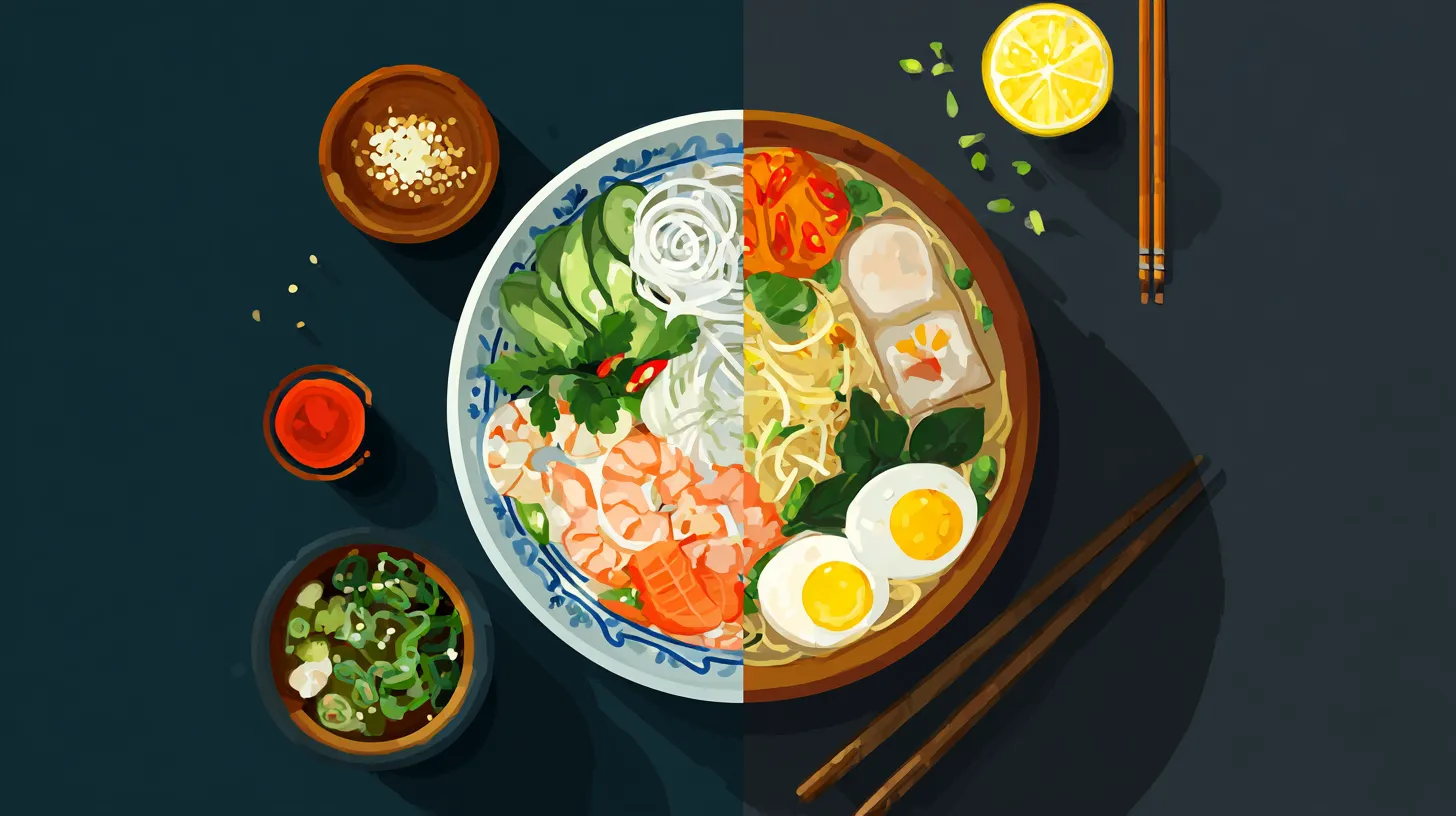Understanding the Regional Cuisines of Vietnam: North vs. South

Vietnamese cuisine is celebrated worldwide for its delicate balance of flavors, fresh ingredients, and vibrant dishes. However, to truly appreciate its culinary depth, one must explore the regional differences between Northern and Southern Vietnamese cuisines. In this article, we delve into these two rich culinary traditions, highlighting their regional specialties, unique flavor profiles, and some must-visit restaurants.
Northern Vietnamese Cuisine: A Subtle Symphony
Flavor Profiles and Ingredients
Northern Vietnamese cuisine, found primarily in Hanoi and its surroundings, is known for its subtle and harmonious flavors that showcase the natural taste of fresh ingredients. Unlike the spicier Southern fare, Northern dishes often use mild spices and are seasoned with salt, fish sauce, and soy sauce for balance.
Noteworthy Dishes
- Pho: Hailing from Hanoi, Pho is perhaps Vietnam’s most iconic dish. It is a noodle soup featuring a clear broth, rounded by aromatic herbs and tender slices of beef or chicken.
- Bun Cha: A delicious combination of grilled pork patties, served with fresh noodles, herbs, and a tangy dipping sauce.
- Cha Ca: A delicacy of seasoned fish, pan-fried with dill and spring onions, often served over vermicelli noodles.
Notable Restaurants
- Cha Ca La Vong (Hanoi): Renowned for its namesake dish, Cha Ca, this Hanoi restaurant is a must-visit for first-time travelers.
- Pho Thin (Hanoi): Known for its exceptional Pho, prepared from a traditional recipe passed down through generations.
Southern Vietnamese Cuisine: A Burst of Colors and Flavors
Flavor Profiles and Ingredients
In stark contrast, Southern Vietnamese cuisine is influenced by warmer climates and fertile landscapes, leading to a diet rich in tropical fruits, herbs, and spices. Dishes from this region are typically sweeter, spicier, and more vibrant than their Northern counterparts, often striking a bold balance of hot, sour, salty, and sweet flavors.
Noteworthy Dishes
- Banh Xeo: A crispy, savory pancake filled with shrimp, pork, and bean sprouts, typically wrapped in lettuce and dipped in spicy fish sauce.
- Hu Tieu: A Southern specialty soup that features clear or thick noodles, seasoned with a myriad of ingredients like pork, seafood, and fresh herbs.
- Com Tam: Commonly known as broken rice, this beloved dish is served with grilled pork and a variety of toppings.
Notable Restaurants
- Ngoc Suong Seafood & Bar (Ho Chi Minh City): Offers an authentic taste of the sea with its selection of fresh, Southern-style seafood dishes.
- Banh Xeo 46A (Ho Chi Minh City): Popular for its incredible Banh Xeo, this spot is a must for those wanting an authentic Southern experience.
Key Differences and Regional Influences
Climate and Geography
The geographical differences between North and South Vietnam significantly influence culinary styles. The cooler climate of the North yields a reliance on indigenous herbs and traditional cooking methods, while the humid tropics of the South promote the use of fresh fruits and more pronounced flavors.
Cultural Influences
Historically, Northern cuisine has been influenced by its proximity to China, resulting in more delicate and milder flavors. Meanwhile, Southern culinary practices reflect a diverse array of influences, including Indian and French, contributing to their culinary richness and complexity.
Conclusion
Understanding the regional distinctions between Northern and Southern Vietnamese cuisines offers a fascinating glimpse into Vietnam's cultural tapestry. Whether you are enticed by the subtle flavors of Northern dishes or drawn to the vivid tastes of Southern fare, Vietnam presents a culinary journey like no other. For food enthusiasts and travelers alike, exploring these regional differences through local dishes and restaurants is essential to truly embrace Vietnamese culture.